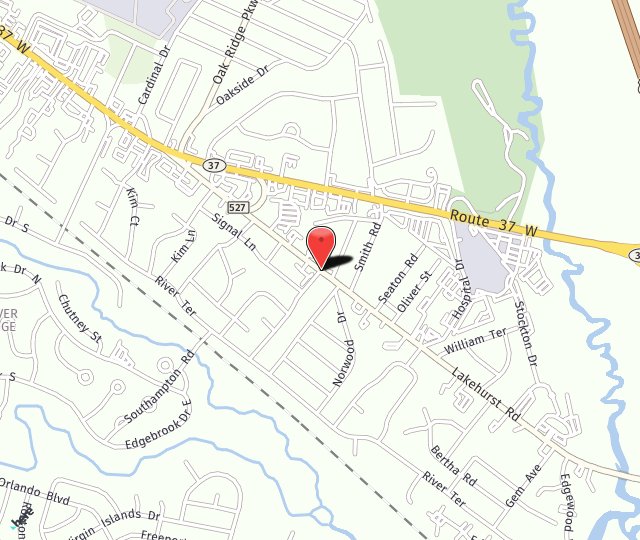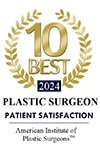Hearing problems are more common than you might think. In fact, one in eight Americans over the age of 12 has hearing loss in both ears, according to the National Institute on Deafness and Other Communication Disorders (NIDCD). If you are experiencing difficulty hearing, excessive earwax, dizziness, persistent ringing, or any other signs of hearing and balance problems, the best thing you can do for your health is to schedule an appointment with a qualified audiologist.
Audiologists are medical professionals who are specially trained in the prevention, evaluation, and treatment of hearing and balance disorders. At Ear, Nose, & Throat of New Jersey, our licensed Audiologist and Hearing Aid Dispenser is committed to improving your quality of life.
If you are a good candidate for hearing aids, you can count on us to work with you every step of the way. We will ensure that everything is working properly and provide adjustments as needed. This extra level of support and patient care comes standard at our modern Toms Rive practice.
Hearing Tests
Hearing tests are used to evaluate your hearing sensitivity. The results will show whether you have problems hearing in one or both ears and how much hearing loss you have experienced.
Hearing loss is often a gradual process that can be difficult to identify in your daily life. That’s why hearing tests measure your hearing sensitivity across the full range of tones and volumes used in speech. It’s important to know that these tests don’t hurt or require special preparation.
Types of Hearing Tests
There are several ways to test your hearing. The right option for you will depend on your age and other unique factors. Our team will determine which tests to administer during your visit.
Common types of hearing tests include:
- Pure-tone test: A pure-tone hearing test, also called pure-tone audiometry, is the main test used to determine hearing threshold levels. You may remember completing this test in school or at a doctor’s office. It involves wearing headphones and raising your hand when you hear a beep to find the quietest sound you can hear at different frequencies.
- Middle ear test: A middle ear test gently vibrates your eardrum using air pressure. Also called tympanometry, this hearing test measures how well your middle ear works. A perforated eardrum is one problem with the middle ear that can cause hearing loss. Fortunately, many issues that impact the middle ear are relatively easy to treat.
- Auditory brainstem response: An auditory brainstem response (ABR) uses a special computer to gather information about the way that the inner ear communicates with the brain. This test is often used for children and others who cannot complete typical hearing tests. An ABR is also appropriate for people with brain pathway related hearing loss.
- Otoacoustic emissions: An otoacoustic emissions (OAE) test checks part of the inner ear’s response to sound. That part of the ear is called the cochlea, and it gives off otoacoustic emissions when exposed to soft clicking sounds. It only takes a few minutes and is often administered to children and older adults instead of behavioral hearing tests.
What Causes Hearing Loss?
Several independent factors may contribute to hearing loss, including:
- Noise exposure
- Genetic predisposition
- Fluid accumulation in the middle ear
- Damage to the small bones in the ear
- Perforation of the eardrum
- Inner ear conditions such as Meniere’s disease
- Certain medications that are considered toxic to the ear (ototoxic)
Types of Hearing Loss
Hearing loss is a relatively complex condition that is categorized as one of three basic types:
- Conductive, resulting from a structural blockage in the middle or outer ear. This blockage diminishes the clarity and volume of sounds. The treatment for conductive hearing loss may include a hearing device, surgery, or bone conduction hearing technology.
- Sensorineural, resulting from damage to the inner ear or auditory nerve. This damage is localized in nerve endings that are not functioning as they should. Treatment for sensorineural hearing loss may include a hearing device or, in severe cases, a cochlear implant.
- Mixed hearing loss involves both structural (conductive) blockage and neural malfunction, affecting the inner ear and the middle or outer ear. Treatment for this type of hearing loss may include a traditional or bone-anchored hearing device.
How Can Hearing Loss Be Prevented?
Hearing loss cannot always be prevented. However, there are ways to protect your ears from unnecessary and excessive stimulation. These steps can help reduce your risk of hearing loss:
- Wear hearing protection such as earplugs or earmuffs.
- Remove earwax carefully using an appropriate irrigation device to soften the wax and wash it away. A Q-tip can push wax deeper into the ear canal and should not be used.
- Prescribed medications and their potential impact on your ears. Approximately 200 drugs, including some antibiotics, can actually damage hearing.
Hearing Aids
Individuals considering the purchase of hearing aids should consult with their doctors in order to make the most sensible choice. Hearing aids are often a very worthwhile investment for many individuals, resulting in improved hearing and the ability to communicate and socialize. Our Audiologist is available for you every step of the way. We are also proud to offer complimentary visits throughout your first year of purchase for any maintenance, questions or concerns.
Types of Hearing Aids
There are three basic styles of hearing aids that vary in size, placement and degree of amplification. The best option for you will depend on the severity of your hearing loss.
Behind the Ear (BTE)
These hearing aids are worn behind the ear and connected to a plastic mold that is placed inside the outer ear. They are utilized by individuals with mild to profound hearing loss.
New technology has introduced a smaller BTE aid consisting of only a small tube placed into the ear canal. This has the advantages of keeping the canal open and protecting the device from damage due to wax buildup. This smaller BTE also provides a clearer sound.
In the Ear (ITE)
These hearing aids are smaller devices that fit inside the outer ear. They can be used for mild to severe hearing loss but are not typically used for children since they will be quickly outgrown.
Canal
Canal aids are the smallest type of aid and fit either in the canal, ITC, or completely in the canal, CIC. Because canal aids are so small, they may be hard to adjust and have very limited space for batteries and other devices. Canal aids, therefore, are most frequently recommended for individuals with mild to moderate hearing loss.
Regardless of style, hearing aids work in two different ways depending on how they are electronically programmed. Our Audiologist can match you with the right option for your needs.
Analog Hearing Aids
These aids convert sound waves into electrical signals which are then amplified and transmitted back to the ear. They can be custom-made to fit each patient’s hearing needs. They can be altered by the patient and customized for different listening environments. Analog aids can be used in any style of hearing aid.
Digital Hearing Aids
Digital hearing aids convert sound waves into numerical codes and then amplify them. Some frequencies can be amplified more than others. Digital aids can also be programmed to focus on sounds coming from a certain direction. These aids tend to be more expensive than the analog variety.
Hearing Aid Brands We Offer
- Oticon: Oticon makes innovative hearing aids and accessories. Their products are designed to provide access to the full sound scene, which allows the brain to work in a more natural way.
- Unitron™: Unitron hearing aid products offer more than just great sound. They solve real-life problems with great aesthetics, impressive comfort, and smart functionality.
- Signia: The latest hearing aids from Signia feature the Augmented Xperience (AX) platform for outstanding speech clarity even in crowded and noisy environments.
Hearing Aid Accessories
We carry a wide range of hearing aid accessories and features designed to make life easier. These options help you enjoy daily activities and keep you seamlessly connected to the world.
A TV connector is one popular hearing aid accessory that allows you to stream high-quality audio from your favorite shows and movies directly to your hearing aids at your desired volume.
Meanwhile, bluetooth hearing aid accessories enable you to connect to a range of devices. For example, you can activate your lights, home alarm, smart thermostat, and more with your hearing aids.
Our providers will gladly recommend accessories that are compatible with your hearing aids.
Call Our Licensed Audiologist Today
Exceptional hearing and balance care is second nature to our team. At Ear, Nose, & Throat of New Jersey, you will meet directly with a licensed Audiologist to improve your quality of life. Call (732) 914-2233 today to schedule a consultation in Toms River.


